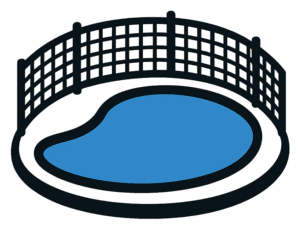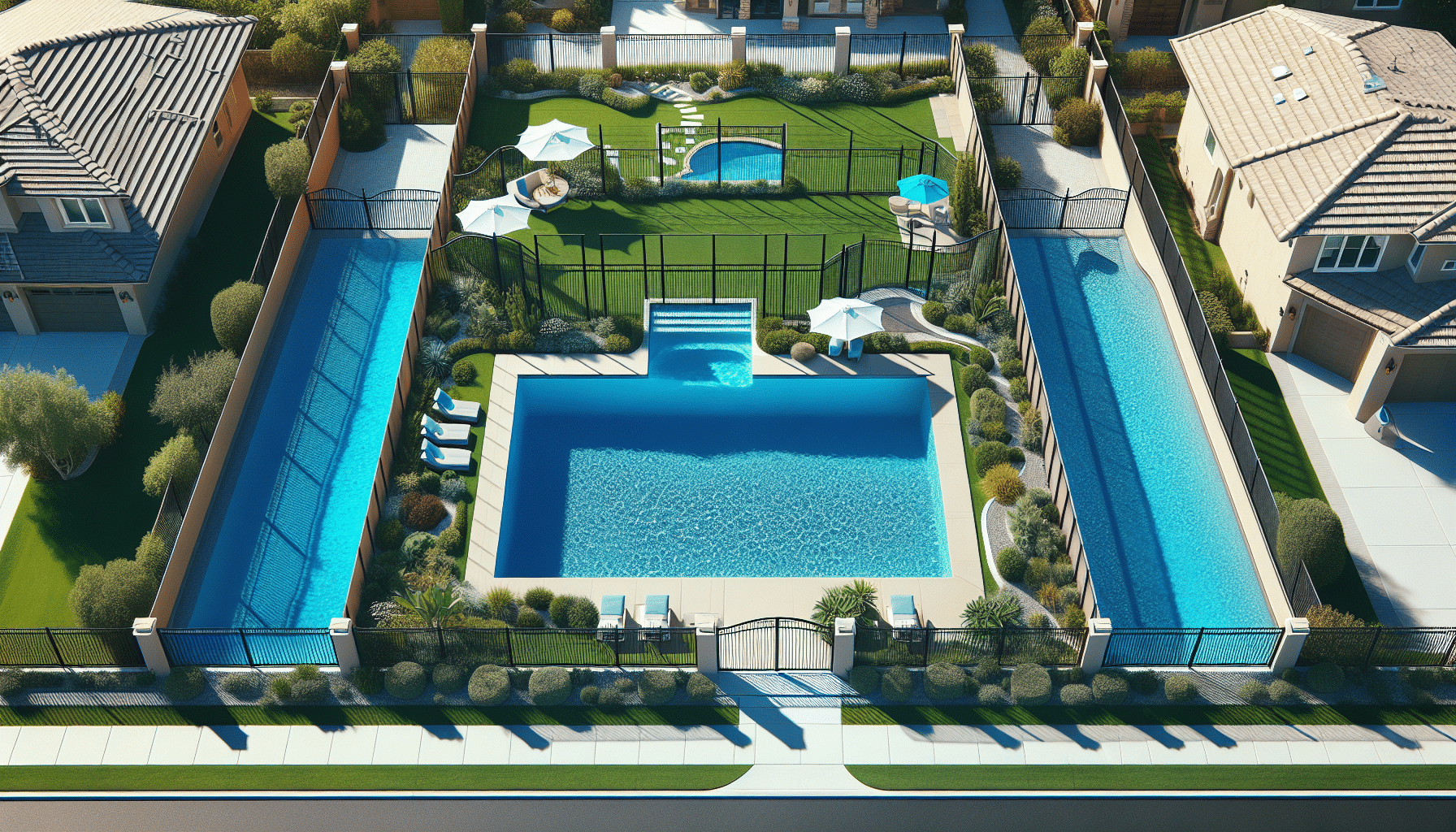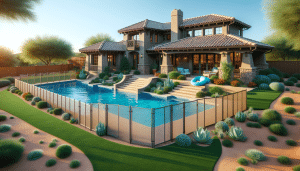Welcome to our deep dive into child-safe pool fence regulations! At Pool Safety Fencing, we understand that keeping your little ones safe around the pool is a top priority. Yet, navigating the regulations can be overwhelming. This guide aims to clarify these rules, offering peace of mind for homeowners juggling the responsibilities of pool ownership. Whether you’re a new or seasoned pool owner, this post will help you ensure compliance and bolster safety.
Contents
- 1 Understanding Pool Fence Regulations
- 2 Key Features of Child-Safe Pool Fences
- 3 Materials for Your Pool Fence
- 4 Maintenance Tips for Your Pool Fence
- 5 Common Hazards Around Pools
- 6 How Regulations Affect Your Property Value
- 7 Choosing a Professional Installation Service
- 8 Cost Considerations for Pool Fence Installation
- 9 Quick Checklist: Pool Safety Fence Requirements
- 10 Taking the Next Steps
Understanding Pool Fence Regulations
Navigating pool fence regulations can feel like a daunting task. But fret not, we’re here to simplify the complex maze of requirements for you. It’s crucial to understand that regulations may vary depending on where you live, but the fundamentals remain consistent across the board.
Most regulations focus on preventing unsupervised access to the pool area by children. Enclosures must be adequately designed and constructed to ensure that children cannot easily bypass them. In this section, we’ll delve into the principles that form the backbone of these regulations, helping you comprehend what’s necessary for your pool’s safety compliance.
Key Features of Child-Safe Pool Fences
Ensuring your pool fence meets child-safety standards involves specific features designed to prevent access. Firstly, the fence should be of a certain height—usually around 4 to 5 feet—to deter climbing. Materials matter too; a sturdy material that a child cannot easily knock down or climb is essential.
In addition, gates must be self-closing and equipped with locks or latches that are out of a child’s reach. This component is a failsafe measure. Designing a fence with vertical bars can also prevent a child from using them as footholds. These criteria form part of the overall regulation designed to keep your pool area secure.
Materials for Your Pool Fence
Choosing the right materials for your pool fence is paramount. Not only do they contribute to the aesthetic appeal, but more importantly, they ensure the durability and safety of the enclosure. Let’s take a closer look at these common materials.
One popular option is wrought iron, known for its strength and stability. It offers both an elegant look and robust safety features. Mesh fencing, on the other hand, is versatile and affordable, providing sufficient flexibility while maintaining safety. Glass panels also serve as an excellent option, offering aesthetic appeal and a clear view of the pool. The choice of material can significantly impact both the look and functionality of your pool fence.
Maintenance Tips for Your Pool Fence
Like any other part of your home, pool fences require regular maintenance to function optimally. This not only extends their lifespan but also ensures continued compliance with safety regulations.
Regular inspections should be at the top of your maintenance list. Look for signs of wear and tear, such as rust or loose parts, particularly in metal fences. In addition, keep an eye out for any breaches in security – such as holes in mesh fencing. If your fence is made of wood, ensure it is sealed and free from rot or termite damage. Consistent upkeep will guarantee that your fence continues to provide the protection your family needs.
Common Hazards Around Pools
While pool fences are crucial, knowing the hazards present around pools aids in minimizing risks. Understandably, it’s the combination of factors that contributes most to potential accidents.
Firstly, the area surrounding your pool should be free from objects that a child might climb onto, such as chairs or pots. Water toys in the pool can also present a temptation for children to access the water unsupervised. Poor lighting may create unsafe conditions that can lead to slips or falls. All these hazards must be evaluated and mitigated to maintain a child-safe environment.
How Regulations Affect Your Property Value
A pool fence doesn’t just add a safety feature to your home; it can also influence the property value. Homeowners may not always realize the impact of being compliant with pool safety regulations when it comes to selling their homes.
A well-maintained pool fence reassures buyers that they are purchasing a property that adheres to safety standards. This perception of responsibility can enhance the home’s appeal and potentially increase its market value. Conversely, neglecting to comply with these regulations might deter potential buyers, resulting in a decreased valuation.
Choosing a Professional Installation Service
When it comes to installing your pool fence, employing a professional service offers numerous benefits over attempting a DIY project. Professional installers ensure that the fence meets all safety regulations and is correctly installed.
An expert installer can also provide valuable advice on the best materials and styles suitable for your home. We at Pool Safety Fencing guarantee precision, compliance, and peace of mind with our professional installation services. We aim to make the process seamless and reliable, ensuring a stress-free experience for you.
Cost Considerations for Pool Fence Installation
As you plan your pool fence installation, it’s important to understand the cost factors involved. Expenses can vary widely based on the materials used, the size of your pool, and any additional features you might desire.
Budgeting this investment involves considering not only the initial installation but also long-term maintenance costs. Keep in mind that while a higher initial cost might seem daunting, opting for durable and high-quality materials often results in reduced maintenance over time. Making an informed decision on costs will ensure both quality and longevity of your pool fence.
Quick Checklist: Pool Safety Fence Requirements
To make things easier for you, we’ve compiled a quick checklist of the essential pool safety fence requirements. Use this list as a handy reference:
- Height Requirement: Ensure your fence stands at a minimum of four feet to prevent children from climbing over.
- Self-Closing Gates: Install gates that automatically close behind you and self-latch to enhance security.
- Latch Position: Position latches at least 54 inches from the ground to keep them out of reach of small children.
- Vertical Bars Placement: Space vertical bars closely enough so that children cannot squeeze through or use them as footholds.
- Appropriate Materials: Use materials like wrought iron, mesh, or glass that offer strength, durability, and visibility.
Taking the Next Steps
Armed with knowledge, it’s time to take action. Evaluate your current setup, or start planning for a new pool installation. Contact professional services to ensure your project aligns with all safety regulations.
By understanding and implementing these child-safe pool fence regulations, you can provide a safer environment for your family. Remember, safety doesn’t happen by accident—it’s a result of careful planning followed by diligent execution.
Secure your peace of mind today! Contact us at 480-771-8026 or request a free quote.




